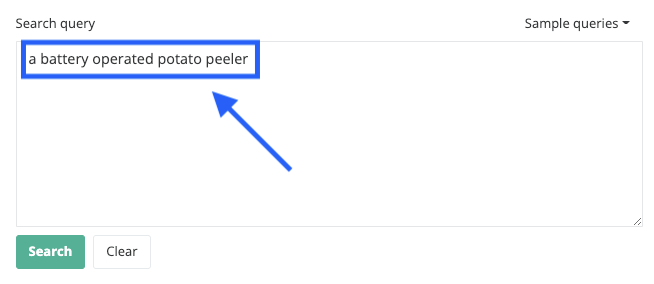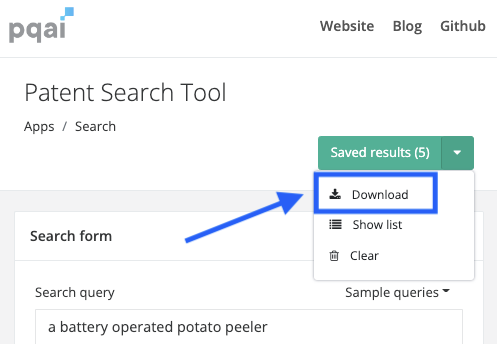
You have invented something new and useful — be it a new garden tool, anti-aging cream, or even a power transfer technique for mobile phones. Bravo! But you might wonder:
Is my invention patentable?
Inventors consider this question shortly after their eureka moments. A patent brings the much-needed security that no one else can get rich off your idea.
But first, you need to apply for one. And before that? Confirm you’re the first person who thought of your innovative idea. That’s where PQAI’s prior art search tool comes in — to help you decide whether it’s worth pursuing a patent.
So, how do you know your odds of getting a patent? Most countries have their own criteria for obtaining patents, though they all have similar features. Notably, the United States Patent and Trademark Office (USPTO) lays out some eligibility criteria for patents that we’ll get into shortly.
Let’s find out what makes an idea patentable.
The costly way to get a patent is to file a patent application with your country’s patent office. Just one round of negotiation with the patent office may cost you ~5000 USD. But why go in blind?
A little homework can go a long way. Keep reading to learn about what it takes to get a patent.
You will also see how PQAI’s prior art search is a vital first step to make patents more accessible and convenient for inventors.
Everything man-made is patentable as long as the invention meets these criteria.
First of all, your invention must be new — the first of its kind. If that’s the case, the patent office will happily provide you with a patent. But their job is to ensure no two people receive the same patent. How do they address this? Glad you asked — it’s called a prior art search. It looks out for inventions that are:
Now, even if your invention is “technically” new (such as a chair with wheels) it may still be denied on the basis of something called “obviousness.”
Let’s say you invented a chair with wheels to make moving around the office easier. But hang on… office chairs already exist. It’s also well known that wheels make it easy to move things around, like a trolley or a car. So adding wheels to the chair seems obvious. And you receive a patent rejection on the basis of obviousness. See the dilemma?
Last but not least, the invention should be functional and have a useful purpose.
Here’s an example. Let’s say you invented a machine meant to chop down trees, but in practice, it barely cuts into the tree and breaks down easily. Unfortunately, your invention doesn’t meet the usefulness requirement.
Novel? Check. Non-obvious? Check. Useful? Check — at least in your mind. But how can you be certain?
It’s time for a patent and prior art search.
Patent search is limited to patent literature. If you submit a patent application, one of a thousand examiners at the USPTO will conduct a thorough patent search to find inventions similar to yours in patents and patent applications, whether published or unpublished. The patent examiners also conduct a search in non-patent literature.
Prior art goes even further than patent literature, including disclosures, publications — pretty much anything that proves someone else invented your invention. Prior art covers both patent and non-patent literature — books, journals, periodicals, products, any publication, and patents and patent applications.
But here’s the thing: searching through millions of prior art items might take ages. And if you hire an attorney or law firm to do it? It’d probably cost you thousands of dollars.
So a pragmatic step is for you, the inventor, to conduct a prior art search yourself to get a good idea about your invention’s patentability.
How can you do this?
With an inventor-friendly prior art search tool like PQAI. You can use it to describe your invention in simple words on the search interface instead of a complex boolean keyword search string.
What if you could get a fair idea about your invention’s patentability within an hour, at zero budget?
PQAI’s AI helps inventors breeze through prior art searches. The tool searches through inventions that resemble yours to narrow down whether it’s feasible to pursue a patent.
Here’s a step-by-step guide to conducting a prior art search with PQAI:
Let’s say you invented a battery-powered potato peeler. With the click of a button, the peeler shaves potato peels smoothly and effortlessly.
So how should you begin your search? What should you put in the search box? We suggest starting with a simple description of what your invention does. Your description can be a high-level overview, not a long, detailed one. Go to PQAI’s Prior Art Search Tool page.
You’ll find it just below the search form on the left. It’s best to keep this initial search as broad as possible, considering only your invention’s general purpose and audience. But don’t worry — you can add more details in more targeted queries (more on that later).

Take a look at the results.
You might notice a wide range of potato peelers with patents, but how many resemble yours? You can get a quick idea by clicking on the “Show Mapping” button with every result.
For example, you might notice an accessory potato peeler for a food processor. Similar, but not by much. You can just ignore those kinds of results at this point.

But if you notice anything with similar wording? For example, “electrically driven” or “motorized” should catch your eye. Now these are the results you want to dig into. You can see more similar inventions by clicking on “More like this.”

The search engine will present ten new results. As you examine each result, look at the accompanying drawings for anything else relevant.
Keep going back and forth, adjusting the search filters to get more relevant results.
If you find any relevant results, click “save results.” Then, you can download a PDF report.

All done? Your PQAI report is primed and ready for your patent attorney’s review. We’ve done most of the legwork, saving you hours and thousands in legal bills. Don’t forget to check out our video demonstration of a PQAI search, too!
Now, your attorney can help you make a faster call about whether it makes sense to file a patent application, and which parts of the invention you should focus on.
What sets PQAI apart from other prior art search options? Here are some notable benefits:
PQAI has a simple, user-friendly interface specifically designed for inventors. No need for expert searching skills or complex keyword search strings — users can prepare search queries in plain English.
Our AI-powered library is consistently trained to deliver only the most relevant results. Its goal is to find everything relevant within the top 10 results, but going beyond is as easy as the click of a button.
PQAI saves you a lot of time that you’d otherwise spend sifting through hundreds of results for relevant ones. The convenient mapping tool helps you assess results with easy excerpts of matching text.
Most patent search tools can’t tell whether your invention is obvious when compared to two or more patents. Our combinational search helps inventors avoid the common 103 rejection.
PQAI compiles relevant prior art into an accessible report to jumpstart your attorney meeting.
The USPTO recognizes three types of patents:
A patent application is subject to filing, examination, and search fees that add up to $300-$3,000, depending on whether you’re a micro-, small, or large entity. You’ll also face fees in the hundreds for extension periods, late filings, incomplete applications, and translations for non-English applications. These are all USPTO fees, but hiring a patent attorney or law firm will cost thousands in legal fees.
The USPTO takes 1-2 years on average to approve a patent.
The easiest, fastest, and cheapest way to reasonably confirm whether your idea is already patented is to conduct a prior art search with PQAI. However, please note even a PQAI search cannot guarantee there is no prior art. But reasonable estimates go a long way.
Google Patent Search is a popular, free patent search tool, though you’ll find other free Google Patents alternatives like PQAI that are more inventor friendly.
The best way to prepare yourself for a patentability discussion with a patent attorney is to do a preliminary prior art search using PQAI.
Common obstacles to obtaining patents are securing funds for legal consultation, rejections based on obviousness or novelty, and incorrectly completed applications.
Absolutely! PQAI neither stores nor shares personal data from queries with external parties. We value user privacy and security.
We recommend adjusting your search filters or loading the next ten results in continuous cycles until you find relevant results. If you can’t find any related patents or prior art, download the report and share it with a patent attorney.
Once you run your idea through PQAI, leverage the prior art results to fine-tune your idea. You might re-evaluate your idea, continue innovating with new inspiration, or take your idea to a patent attorney.
So, is my invention patentable? PQAI’s prior art search engine is the best way to find out. It is specifically designed for inventors to check their ideas for patentability, but that’s not the only reason you should use it.
PQAI has big plans to shape the future of AI patent search, and here’s how we’re doing it. Our open-source, AI-powered library invites collaboration, compiling expertise from the finest minds across the globe — professional software developers and creative thinkers like you! With global access to these tools, our not-for-profit initiative drives diversity and inclusion, accelerates innovation, improves patent quality, and more.
It’s time to conduct your own patentability search. Try out the PQAI prior art search engine!
©2024 Project PQAI | All Rights Reserved